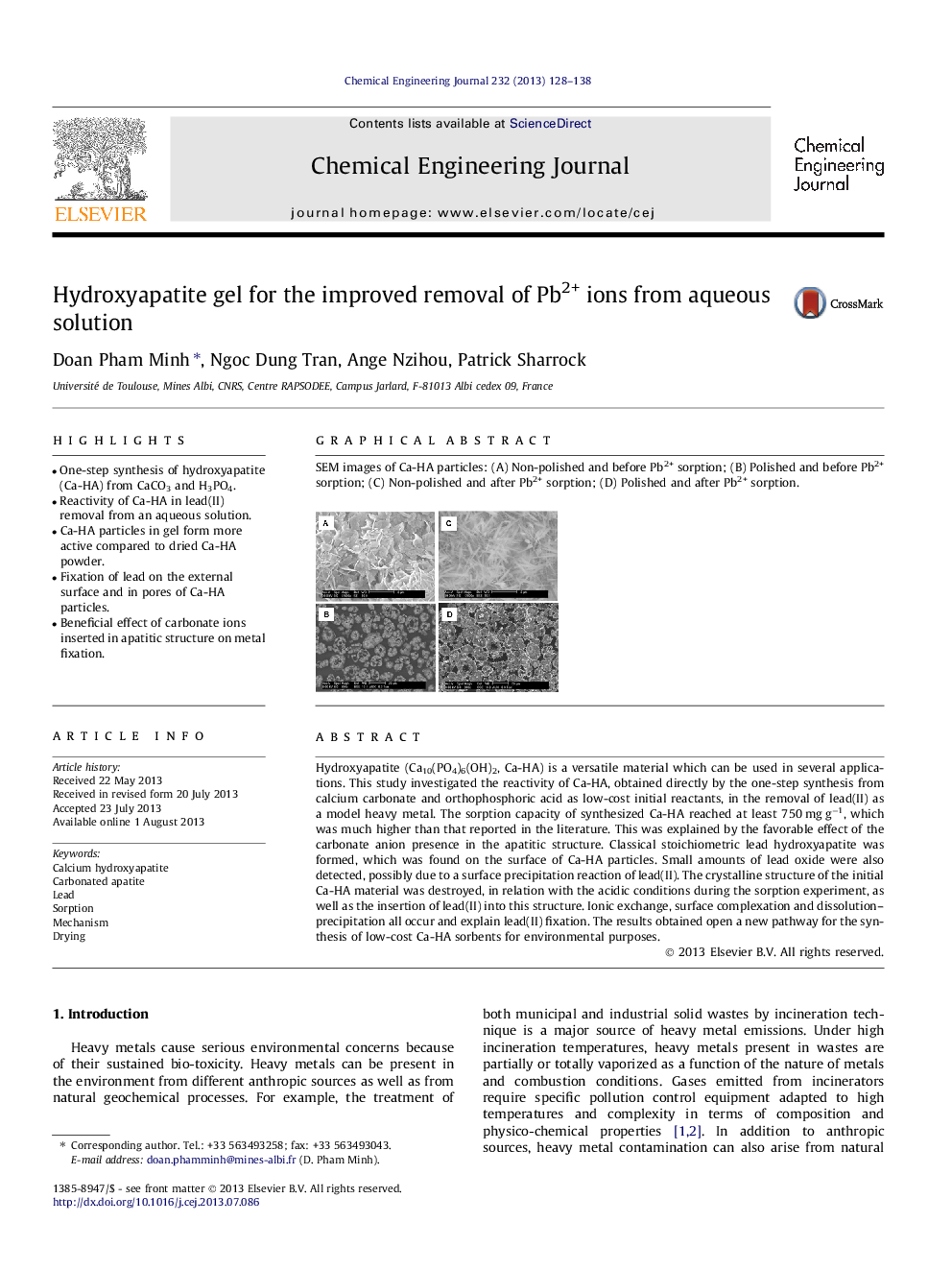| کد مقاله | کد نشریه | سال انتشار | مقاله انگلیسی | نسخه تمام متن |
|---|---|---|---|---|
| 148131 | 456406 | 2013 | 11 صفحه PDF | دانلود رایگان |

• One-step synthesis of hydroxyapatite (Ca-HA) from CaCO3 and H3PO4.
• Reactivity of Ca-HA in lead(II) removal from an aqueous solution.
• Ca-HA particles in gel form more active compared to dried Ca-HA powder.
• Fixation of lead on the external surface and in pores of Ca-HA particles.
• Beneficial effect of carbonate ions inserted in apatitic structure on metal fixation.
Hydroxyapatite (Ca10(PO4)6(OH)2, Ca-HA) is a versatile material which can be used in several applications. This study investigated the reactivity of Ca-HA, obtained directly by the one-step synthesis from calcium carbonate and orthophosphoric acid as low-cost initial reactants, in the removal of lead(II) as a model heavy metal. The sorption capacity of synthesized Ca-HA reached at least 750 mg g−1, which was much higher than that reported in the literature. This was explained by the favorable effect of the carbonate anion presence in the apatitic structure. Classical stoichiometric lead hydroxyapatite was formed, which was found on the surface of Ca-HA particles. Small amounts of lead oxide were also detected, possibly due to a surface precipitation reaction of lead(II). The crystalline structure of the initial Ca-HA material was destroyed, in relation with the acidic conditions during the sorption experiment, as well as the insertion of lead(II) into this structure. Ionic exchange, surface complexation and dissolution–precipitation all occur and explain lead(II) fixation. The results obtained open a new pathway for the synthesis of low-cost Ca-HA sorbents for environmental purposes.
SEM images of Ca-HA particles: (A) Non-polished and before Pb2+ sorption; (B) Polished and before Pb2+ sorption; (C) Non-polished and after Pb2+ sorption; (D) Polished and after Pb2+ sorption.Figure optionsDownload as PowerPoint slide
Journal: Chemical Engineering Journal - Volume 232, October 2013, Pages 128–138